前言:昨天介紹了如何建立專案、建立空陣列、讀取存放資料及修改儲存空間,今天要繼續實作陣列的其他功能。
編寫set()函式修改陣列中的資料。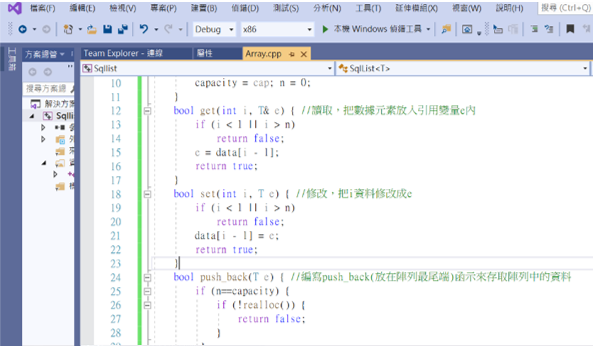
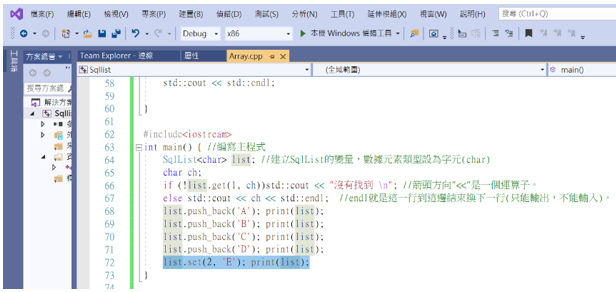
可以看到陣列的原本第二個資料B已修改成E。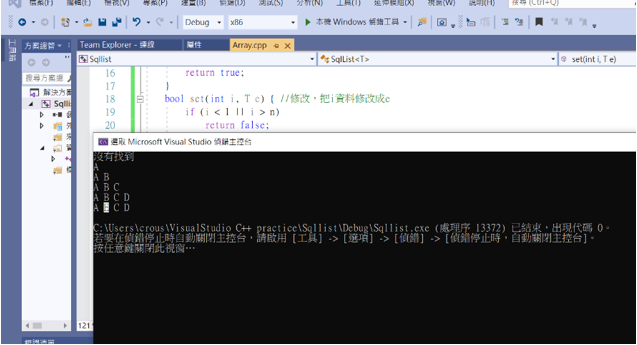
編寫insert()函式插入新的資料在陣列之中。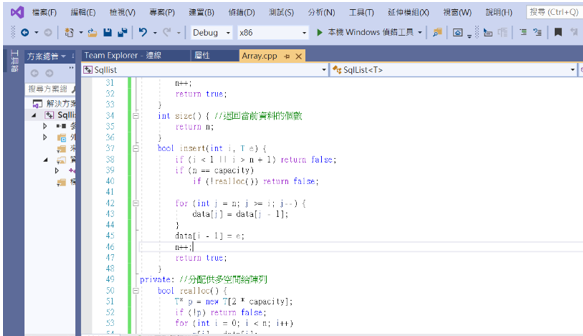
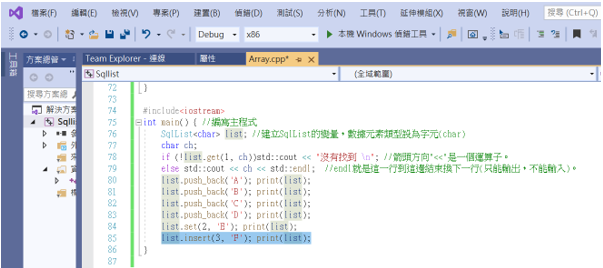
可以看到在陣列的第三個位置中插入F。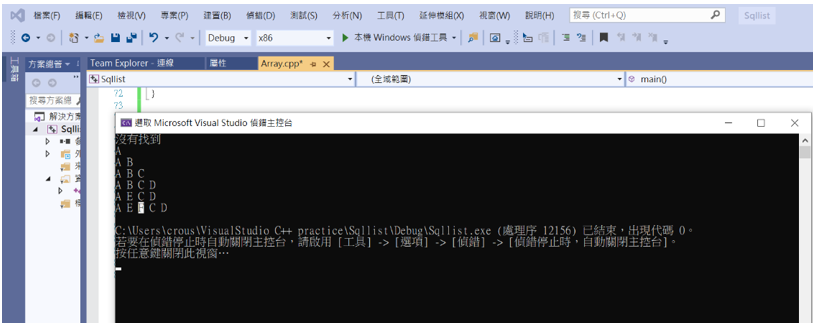
接著編寫remove()函式移除陣列中的資料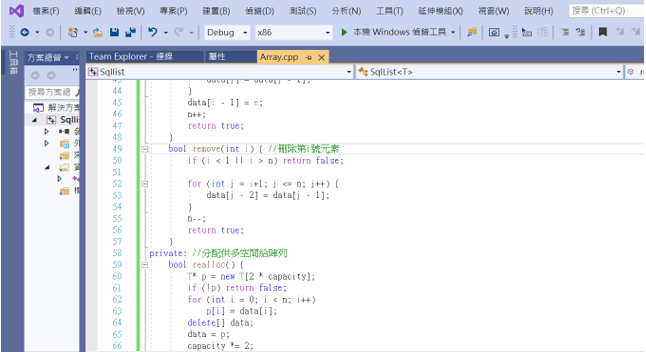
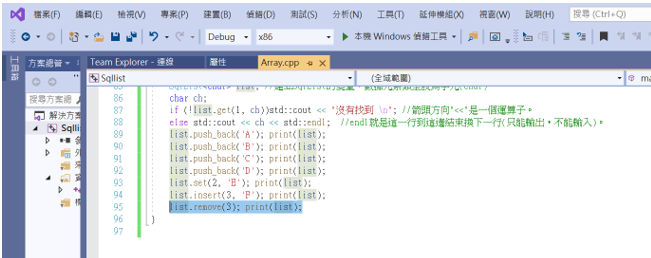
可以看到原本在第三個位置的F被移除
編寫pop_back刪除最後一個元素。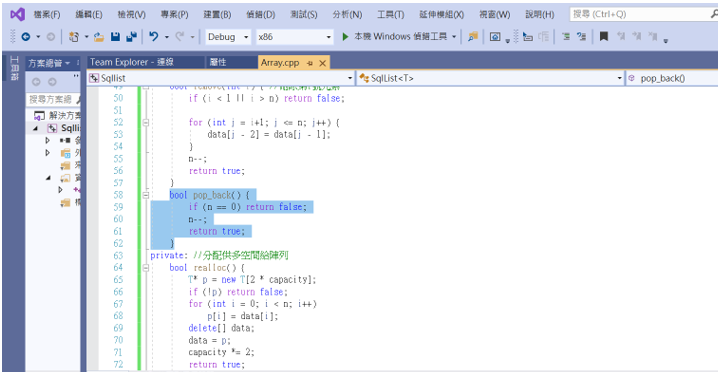
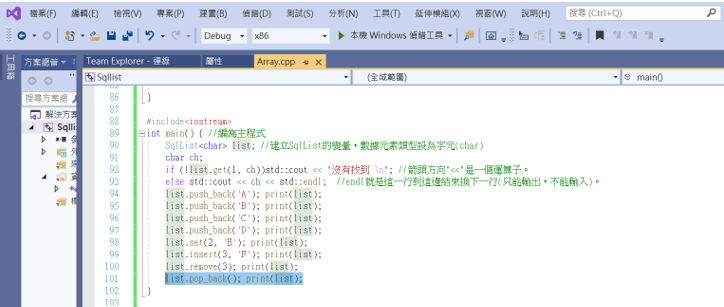
可以看到在最後一個位置的元素D被移除了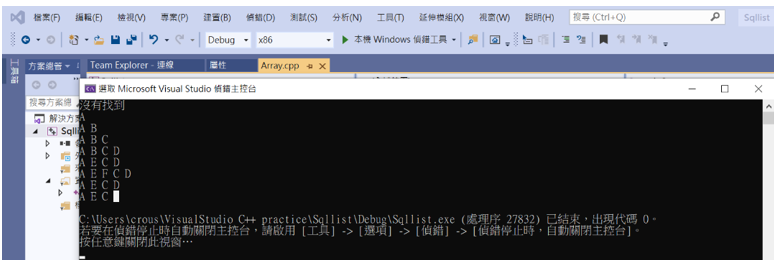
邊寫remove_front()函式刪除第一個元素。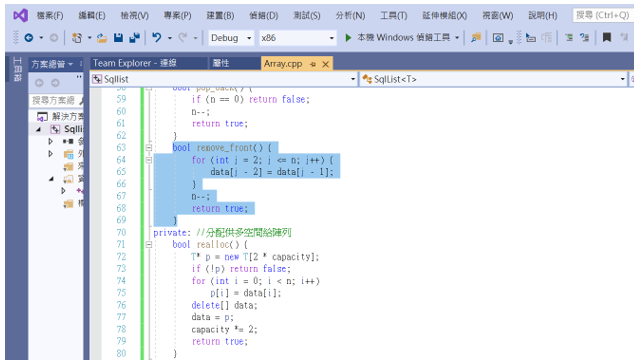
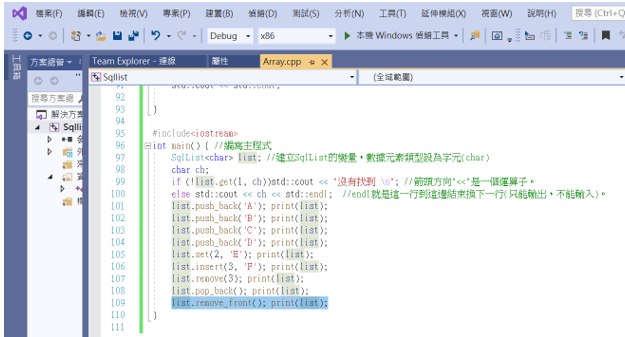
第一個位置的A已成功刪除。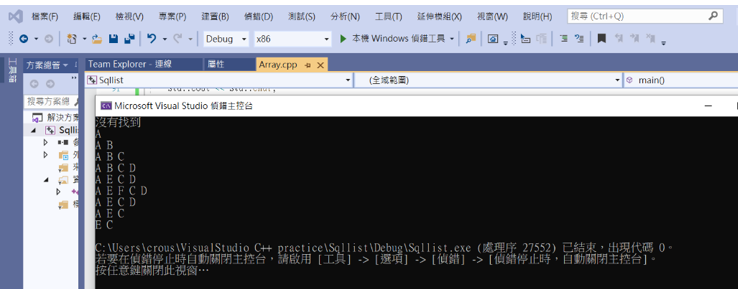
編寫find()函式查找元素所在的位置。

假設要查找C的位置,結果如下。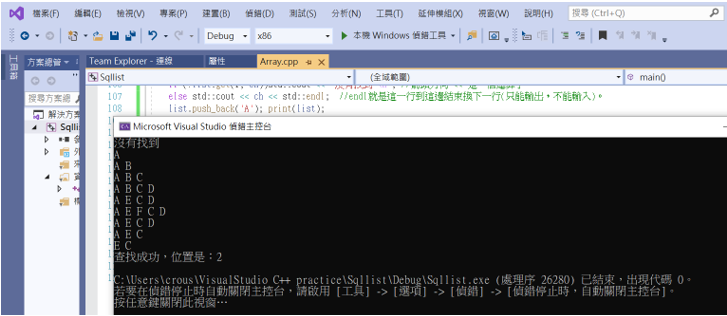
那如果陣列有多筆相同的資料,要怎麼查找?
寫一個for迴圈,在新增一個變數p存取A的位置,每遇到一次A就印出位置一次,直到陣列結束,就可以囉!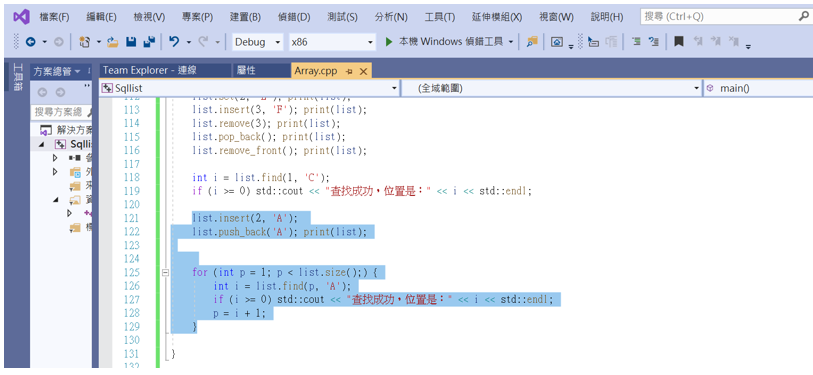

今日小結:呼~陣列的實作就先到這邊告一段落,其實還有很多應用,但是要全部介紹完恐怕會花上太多篇幅,有機會再跟大家分享。雖然這些實作都算是基礎,不過以初學者來說要完全理解也不是甚麼輕鬆事(包括我(≧д≦ヾ)),雖然程式碼看起來很複雜,但只要考清楚陣列在位置上的變動,就可以比較快理解,好了,明天就來介紹陣列的兄弟「鏈結串列」!
template<typename T> //將資料型態參數化的功能,代號為T
class SqlList {
T* data; //指針變量
int capacity, n; //分配空間(整數int),n表示數據元素的個數,先設為0
public:
SqlList(int cap = 3) { //創建一個空的SqlList(不包含任何元素)
data = new T[cap]; //給予數據成員讓其初始化
if(!data) throw "SqlList內存空間分配失敗"; //檢查空間是否成功分配{capacity = 0; n = 0; return}
capacity = cap; n = 0;
}
bool get(int i, T& e) { //讀取,把數據元素放入引用變量e內
if (i < 1 || i > n)
return false;
e = data[i - 1];
return true;
}
bool set(int i, T e) { //修改,把i資料修改成e
if (i < 1 || i > n)
return false;
data[i - 1] = e;
return true;
}
bool push_back(T e) { //編寫push_back(放在陣列最尾端)函示來存取陣列中的資料
if (n==capacity) {
if (!realloc()) {
return false;
}
}
data[n] = e;
n++;
return true;
}
int size() { //返回當前資料的個數
return n;
}
bool insert(int i, T e) { //在i號位置插入資料e
if (i < 1 || i > n + 1) return false;
if (n == capacity)
if (!realloc()) return false;
for (int j = n; j >= i; j--) {
data[j] = data[j - 1];
}
data[i - 1] = e;
n++;
return true;
}
bool remove(int i) { //刪除第i號元素
if (i < 1 || i > n) return false;
for (int j = i+1; j <= n; j++) {
data[j - 2] = data[j - 1];
}
n--;
return true;
}
bool pop_back() {
if (n == 0) return false;
n--;
return true;
}
bool remove_front() {
for (int j = 2; j <= n; j++) {
data[j - 2] = data[j - 1];
}
n--;
return true;
}
int find(int pos,T e) { //查找元素所在的位置,從pos(重新定義)位置開始找
for (int i = pos; i <= n; i++)
if (data[i-1] == e) {
return i;
}
return 0;
}
private: //分配供多空間給陣列
bool realloc() {
T* p = new T[2 * capacity];
if (!p) return false;
for (int i = 0; i < n; i++)
p[i] = data[i];
delete[] data;
data = p;
capacity *= 2;
return true;
}
};
#include<iostream>
template<typename T>
void print(SqlList<T>& L) { //編寫print函示
T e; //數據元素類型e為T類型
for (int i = 1; i <= L.size(); i++) {
L.get(i, e);
std::cout << e << " ";
}
std::cout << std::endl;
}
#include<iostream>
int main() { //編寫主程式
SqlList<char> list; //建立SqlList的變量,數據元素類型設為字元(char)
char ch;
if (!list.get(1, ch))std::cout << "沒有找到 \n"; //箭頭方向"<<"是一個運算子。
else std::cout << ch << std::endl; //endl就是這一行到這邊結束換下一行(只能輸出,不能輸入)。
list.push_back('A'); print(list);
list.push_back('B'); print(list);
list.push_back('C'); print(list);
list.push_back('D'); print(list);
list.set(2, 'E'); print(list);
list.insert(3, 'F'); print(list);
list.remove(3); print(list);
list.pop_back(); print(list);
list.remove_front(); print(list);
int i = list.find(1, 'C');
if (i >= 0) std::cout << "查找成功,位置是:" << i << std::endl;
list.insert(2, 'A');
list.push_back('A'); print(list);
for (int p = 1; p < list.size();) {
int i = list.find(p, 'A');
if (i >= 0) std::cout << "查找成功,位置是:" << i << std::endl;
p = i + 1;
}
}
